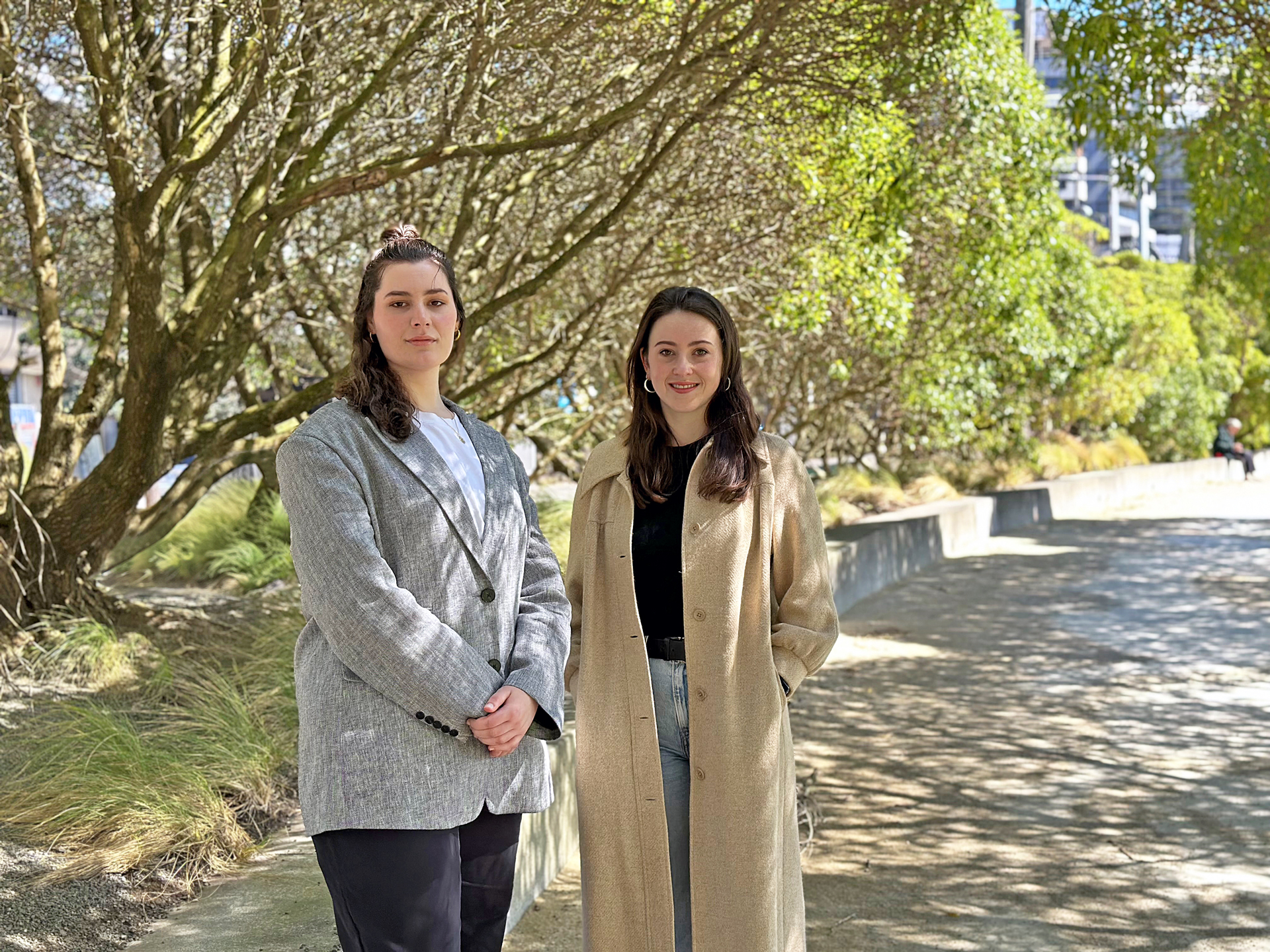As applications open for the 2024 F. Gordon Wilson Fellowship, we catch up with the 2023 recipients, Mitra Homolja and Ellie Tuckey.
1 July 2024
In the past six months, Mitra Homolja and Ellie Tuckey, inaugural recipients of the F. Gordon Wilson Fellowship, have developed their knowledge in climate adaptation and social resilience in public housing. It’s the focus of their Fellowship research, which asks the question: as climate change increases the frequency of severe weather events, what can be done about public housing in Te Awa Kairangi ki Tai Lower Hutt?
The area is one of the most densely populated flood plains in Aotearoa New Zealand and one the architectural graduates, based in Pōneke Wellington, know well. Together, Homolja and Tuckey run Third Studio, an architectural and urban design consultancy with expertise in community-orientated approaches to planning and design. With the $20,000 Fellowship, they’re looking to improve the feasibility and implementation of new, circular economy construction (CEC) solutions for climate change mitigation in Lower Hutt’s at-risk public housing.
You’re about halfway through the Fellowship. What have you learnt so far?
Homolja: We’ve spent time understanding the broad landscape of the research topic, investigating hunches and narrowing the scope. We had a stall at in:situ, with support from the Institute, and presented the purpose of this research in an attempt to connect with other architectural professionals on climate adaptive architecture. The emerging themes that came from our conversations at in:situ illustrated that there are differing ideas about what “climate resilience” is and how it is achieved; there is a concern among architectural graduates regarding how little climate resilience is being addressed in the industry and that the majority of architectural professionals do not use CEC methods.
Tuckey: Our review of literature in this area has reinforced that communities in Te Awa Kairangi ki Tai will need to change the status quo of construction for future resilience, so in the past few months we’ve made significant strides in exploring timber circular economy systems, climate adaptation and social resilience. Mātauranga Māori, or (very simply put) Māori knowledge, is a crucial perspective in discussions around climate resilience. Our interviews with industry groups and individuals, including a Te Āti Awa kaumatua, Kāinga Ora, CRESA, XFrame and others, have highlighted the urgency of building housing to meet demands, whilst balancing the changing environments. It’s also becoming apparent that circular economy construction systems have a lot of conditions and caveats to work well and have often been pushed aside in favour of more familiar, permanent structures.
What has surprised you as you learn more about the issues around future-proofing existing public housing?
Tuckey: One particularly interesting part has been the heightened awareness among young professionals in architecture and construction about climate adaptation, and their concern about the industry's underwhelming response to the problem. There’s concern within industry professionals about a perceived lack of climate-related innovation, and a sense of guilt over their role in maintaining the status quo.
Cost is always a major factor in testing, piloting and implementing CEC solutions, or any non-mainstream solutions to climate resilience. Innovation is sacrificed due to cost and increasing demand to construct new homes rapidly. There are no monetary incentives for industry to change. CEC companies struggle in Aotearoa because there is not enough of a mandate to facilitate circularity and not enough of a focus on dematerialisation. There are often compromises which have to be made to deliver commercially viable products.
What have you learnt about yourselves in the process?
Homolja: This research has been a rewarding return to in-depth investigation for me. The collaborative journey has been enriching and humbling and has allowed me to connect with heaps of diverse perspectives. I’ve learned the importance of narrowing down scope and staying clear on our objectives.
What’s next in your work to complete the Fellowship?
Homolja: The research is emphasising that building in flood-prone areas presents structural and social challenges that require integrated approaches. Breaking down silos and bolstering cross-pollination of knowledge between Government, industry and communities is paramount, now more than ever. Moving forward, our immediate focus is on completing a few more interviews and synthesising insights from our thorough literature review. This will help us refine the parameters and critical evaluation methods for the scenario studies we will then produce.
Entries for the 2024 Fellowship are open now. Click here to enter.




